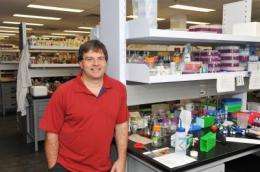Researchers crack genetic codes for medicinal plant species

Researchers from across Canada have identified the genetic makeup for a large number of medicinal plant species and are making the codes available to scientists and the public on-line.
A nation-wide group of researchers, led by the University of Calgary's Dr. Peter Facchini and Dr. Vincent Martin of Concordia University in Montréal, are unraveling the genetic blueprints of 75 plant species that have potential applications in the pharmaceutical, natural health product, food and chemical industries. Previously, the efforts of scientists were focused on a fairly small numbers of plant species.
"The creation of a public resource of genetic information for plants that produce a large number of important and valuable natural products is an important milestone in our project," says Facchini, a professor of biological sciences at the University of Calgary and co-leader of the PhytoMetaSyn Project, which started two years ago and involves scientists from universities and research institutes from across the country.
"We are completing the analysis of the genetic codes for nearly 75 plant species and are making them accessible on-line as they become available with the hopes of having the entire set in our web portal by the end of February 2012. Currently more than half of the 75 species are available on our website."
The Project website is www.phytometasyn.com.
Plants contain specialized enzymes encoded by their unique genes that make them effective producers of medicines, flavors, fragrances, pigment, insecticides and other chemicals. Many of these compounds are still produced commercially from plants. Having access to such genetic information is a critical aspect of their research, which targets the development of technologies to re-create plant pathways in microbes such as yeast.
New compounds not found in nature:
Synthetic biology, as it is known, also has the potential to combine genes from different plants to make new compounds not found in nature. For example, Facchini's groundbreaking discovery of the genes that allows the opium poppy to make codeine and morphine has led the way to making effective painkillers in pharmaceutical factories, or creating plants that will only produce the more-valuable codeine. Other species being studied have a diverse range of medicinal applications ranging from anti-plaque agents, wart removal to anti-inflammatory and anti-cancer treatments.
"Genomic information of that nature and scale is a treasure trove for synthetic biologists," says PhytoMetaSyn co-leader Vincent Martin, a professor in the Concordia Department of Biology. "It provides access to many genes or parts that can be used to produce molecules on an industrial scale."
The project also has a team looking at the ethics, economics, legal and social implications of the science. "An interesting question is, who actually owns this genetic information?" asks Facchini. "We're releasing it publically because we feel it belongs to everyone. We discovered it, but we didn't invent it."
Dr. Tania Bubela, from University of Alberta's School of Public Heath, studies ethical issues relating to synthetic biology in the PhytoMetaSyn Project. "As with all new fields of research, maintaining the trust of the public and the regulators is key," says Bubela. "What scientists do at this early stage will determine directions in the future."
Provided by University of Calgary


















